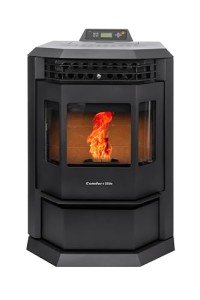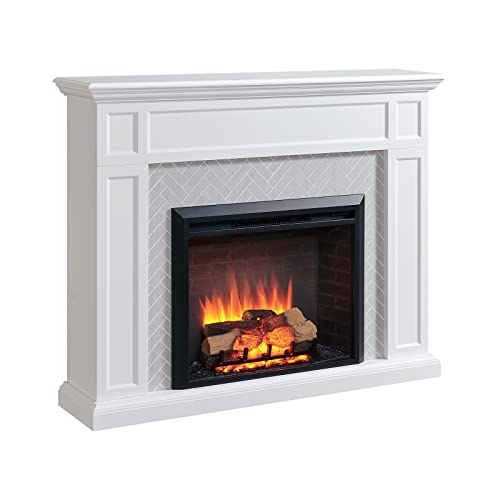
Fireplaces USA
Add a review FollowOverview
-
Founded Date October 29, 1990
-
Sectors Remote AI Job
-
Posted Jobs 0
-
Viewed 14
Company Description
Five Killer Quora Answers On Outdoor Stoves Online
Best Value Fireplaces: An In-Depth Guide
The fireplace has long been regarded as the heart of a home, offering warmth, ambiance, and a centerpiece for celebrations. However, browsing through different choices can be overwhelming, specifically with budget restrictions in mind. This short article presents a useful guide on the very best value fireplaces, detailing their types, features, and advantages to help homeowners make a wise choice.

Kinds of Fireplaces
Fireplaces are available in a range of styles and types, each with different attributes, expenses, and benefits. Here’s an in-depth take a look at the most typical types of fireplaces readily available in the market today.

| Kind of Fireplace | Description | Average Cost | Pros | Cons |
|---|---|---|---|---|
| Wood-Burning | Burn logs to produce heat and atmosphere. | ₤ 1,500 – ₤ 5,000 | Authentic experience, natural heat | Needs routine upkeep, less efficient |
| Gas Fireplaces | Uses gas or gas to produce heat. | ₤ 2,000 – ₤ 5,000 | Easy to utilize, cleaner than wood | Minimal to gas supply, setup costs |
| Electric Fireplaces | Imitates flames with LED technology and produces heat through electricity. | ₤ 200 – ₤ 3,000 | Easy setup, installation versatility | Less genuine feel, higher operating expense |
| Pellet Outdoor Stoves Online | Use compressed wood or biomass pellets, providing an eco-friendly option. | ₤ 3,000 – ₤ 4,500 | Efficient, low emissions | Needs electrical energy to run, requires storage for pellets |
| Ethanol Fireplaces | Burns ethanol fuel, producing flames that do not require a chimney. | ₤ 300 – ₤ 2,500 | No vents needed, portable | Greater fuel cost, safety issues |
Aspects to Consider When Choosing a Fireplace
Selecting the best fireplace is not practically visual appeals; it also involves practical considerations. Here are important factors to bear in mind:
1. Budget plan
- Determine just how much you want to invest. Keep in mind that installation and upkeep expenses can accumulate.
2. Area and Size
- Ensure the fireplace fits well within the space, thinking about both the area offered and the heating requirements.
3. Fuel Type
- Pick the fuel source based upon schedule, expense, and the kind of ambiance you want to attain.
4. Efficiency
- Decide for units with high-efficiency ratings to ensure you are getting the most value for your cash in terms of heat output.
5. Visual Appeal
- Select a style and style that complements existing decoration and enhances the general beauty of the space.
6. Regulations
- Be conscious of local regulations, permits, and building regulations that may impact your fireplace installation.
Top Best Value Fireplaces
Based upon customer reviews, expert viewpoints, and total value for cash, here are some of the best value fireplaces presently readily available in the market:
1. DuraVent Pellet Stove
- Type: Pellet
- Average Cost: ₤ 2,000
- Highlights: Highly efficient with low emissions, making it an outstanding alternative for environmentally-conscious homeowners.
2. Napoleon B36NTR-1
- Type: Gas
- Typical Cost: ₤ 2,500
- Highlights: This fireplace is aesthetically enticing and highly efficient, with a smooth style and adjustable flame.
3. Duraflame Electric Heater Stove
- Type: Electric
- Typical Cost: ₤ 200
- Highlights: Affordable and portable, best for smaller areas or adding atmosphere to a room without permanent installation.
4. Genuine Flame Juliet Gel Fireplace
- Type: Ethanol
- Average Cost: ₤ 300
- Highlights: A stylish option for modern spaces that requires no venting, making it flexible and easy to install.
5. Vogelzang VG5790
- Type: Wood-Burning
- Typical Cost: ₤ 800
- Emphasizes: Offers a traditional wood-burning experience with a smooth modern design, perfect for those who value the timeless atmosphere.
Often Asked Questions (FAQs)
Q1: What is the most cost-effective fireplace choice?
A1: Electric fireplaces tend to be the most affordable in terms of preliminary purchase price and installation, however can have higher operating costs compared to gas or pellet units.
Q2: Are gas fireplaces more secure than wood-burning fireplaces?
A2: Yes, gas fireplaces usually produce fewer emissions and position a lower danger of chimney fires as they don’t produce creosote like wood-burning systems.
Q3: Can I install a fireplace myself?
A3: While some electric fireplaces enable simple self-installation, other types, particularly gas and wood-burning designs, typically require expert installation due to venting and safety issues.
Q4: How do I keep my fireplace?
A4: Regular maintenance consists of cleaning the chimney (for wood-burning fireplaces), looking for gas leakages (in gas units), and making sure correct ventilation for electric designs.
Q5: Is an ethanol fireplace a great option?
A5: Ethanol fireplaces are appealing for their modern style and ease of installation. Nevertheless, they can be less efficient and more expensive to run long-term compared to other fuel types.
Selecting a value fireplace that fulfills your visual preferences and useful needs includes comprehensive research study and consideration. By understanding different kinds of fireplaces, their associated expenses, and advantages, house owners can make informed choices that will not only fit their budget plan however likewise improve the warm and inviting environment of their homes. Whether selecting an electric, gas, wood-burning, pellet, or ethanol model, the ideal fireplace awaits to transform your living area.


